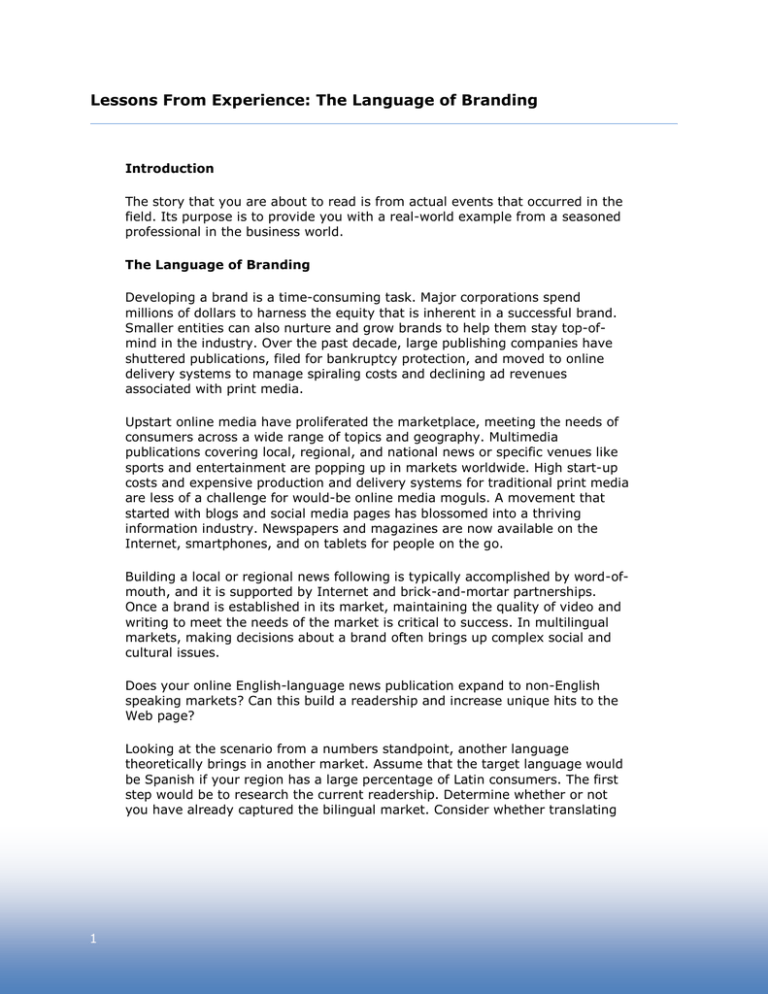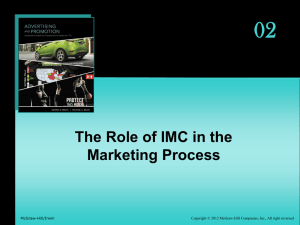Lessons From Experience: The Language of Branding
advertisement

Lessons From Experience: The Language of Branding Introduction The story that you are about to read is from actual events that occurred in the field. Its purpose is to provide you with a real-world example from a seasoned professional in the business world. The Language of Branding Developing a brand is a time-consuming task. Major corporations spend millions of dollars to harness the equity that is inherent in a successful brand. Smaller entities can also nurture and grow brands to help them stay top-ofmind in the industry. Over the past decade, large publishing companies have shuttered publications, filed for bankruptcy protection, and moved to online delivery systems to manage spiraling costs and declining ad revenues associated with print media. Upstart online media have proliferated the marketplace, meeting the needs of consumers across a wide range of topics and geography. Multimedia publications covering local, regional, and national news or specific venues like sports and entertainment are popping up in markets worldwide. High start-up costs and expensive production and delivery systems for traditional print media are less of a challenge for would-be online media moguls. A movement that started with blogs and social media pages has blossomed into a thriving information industry. Newspapers and magazines are now available on the Internet, smartphones, and on tablets for people on the go. Building a local or regional news following is typically accomplished by word-ofmouth, and it is supported by Internet and brick-and-mortar partnerships. Once a brand is established in its market, maintaining the quality of video and writing to meet the needs of the market is critical to success. In multilingual markets, making decisions about a brand often brings up complex social and cultural issues. Does your online English-language news publication expand to non-English speaking markets? Can this build a readership and increase unique hits to the Web page? Looking at the scenario from a numbers standpoint, another language theoretically brings in another market. Assume that the target language would be Spanish if your region has a large percentage of Latin consumers. The first step would be to research the current readership. Determine whether or not you have already captured the bilingual market. Consider whether translating 1 Lessons From Experience: The Language of Branding stories would be counterproductive or erode your brand with the native speakers. It is important to take the following away from this scenario: • • 2 The most loyal consumers are the most resistant to change when it comes to the brand; therefore, making changes that could erode the brand’s image is not an effective strategy. Developing new products or extending the brand itself must be supported by market research so that when the decisions are made, they are based on quality information.






